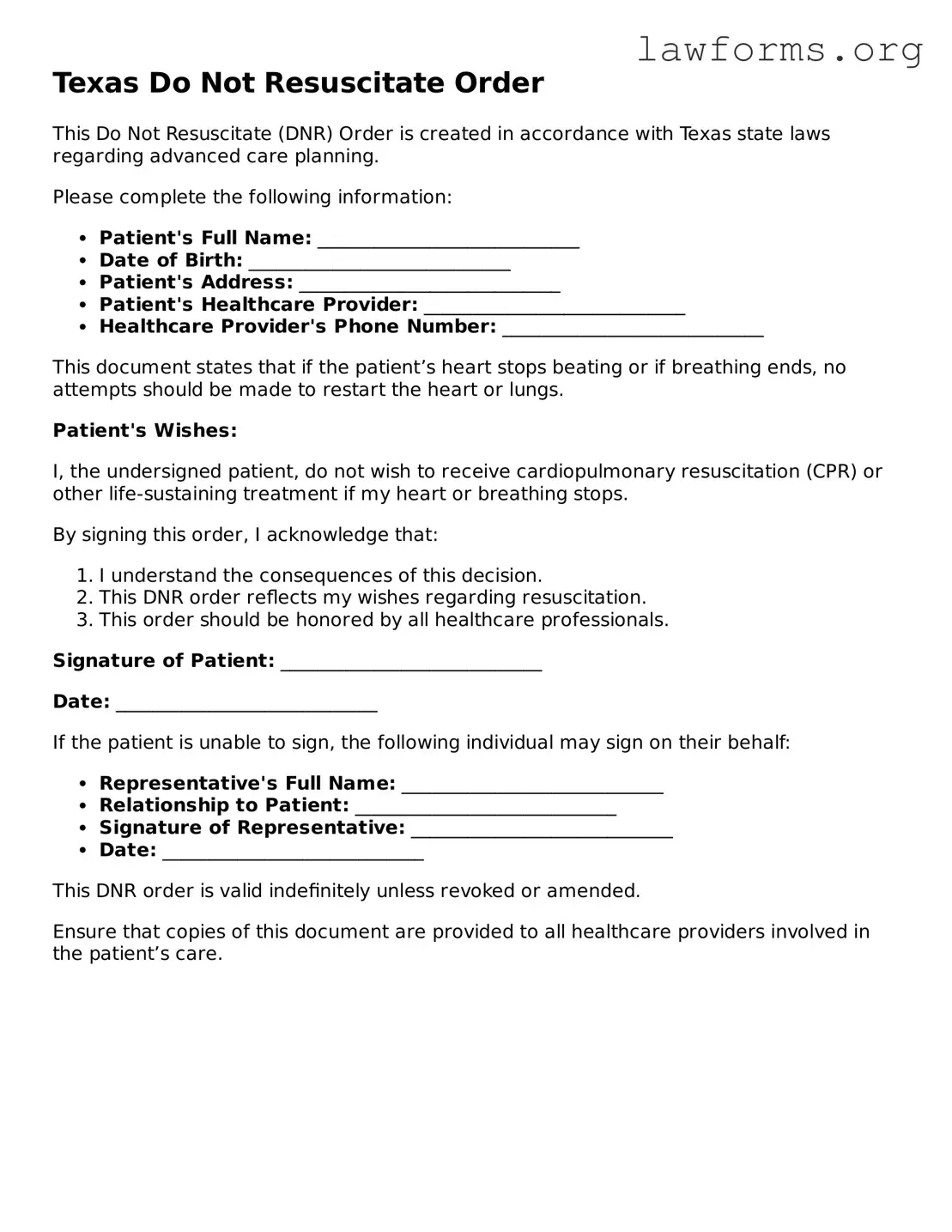Texas Do Not Resuscitate Order
This Do Not Resuscitate (DNR) Order is created in accordance with Texas state laws regarding advanced care planning.
Please complete the following information:
- Patient's Full Name: ____________________________
- Date of Birth: ____________________________
- Patient's Address: ____________________________
- Patient's Healthcare Provider: ____________________________
- Healthcare Provider's Phone Number: ____________________________
This document states that if the patient’s heart stops beating or if breathing ends, no attempts should be made to restart the heart or lungs.
Patient's Wishes:
I, the undersigned patient, do not wish to receive cardiopulmonary resuscitation (CPR) or other life-sustaining treatment if my heart or breathing stops.
By signing this order, I acknowledge that:
- I understand the consequences of this decision.
- This DNR order reflects my wishes regarding resuscitation.
- This order should be honored by all healthcare professionals.
Signature of Patient: ____________________________
Date: ____________________________
If the patient is unable to sign, the following individual may sign on their behalf:
- Representative's Full Name: ____________________________
- Relationship to Patient: ____________________________
- Signature of Representative: ____________________________
- Date: ____________________________
This DNR order is valid indefinitely unless revoked or amended.
Ensure that copies of this document are provided to all healthcare providers involved in the patient’s care.
